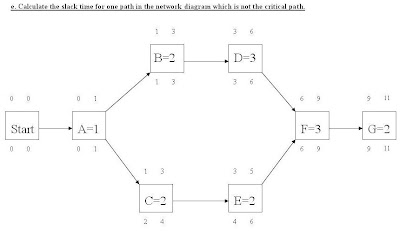The best thing I like from this course are exposure in managing the project especially in Information Technology, lecture always show the example that relate with this course and reality inside or outside university, so we are not just get the theoretical part, but in the same time we got the practical too. The most important thing is this course encourages us to manage properly and become a good project manager and teams because Islam emphasized us to be trustful or Amanah in dealing with people and all the things we do.
The uncomfortable thing I dislike from this course is class time. It is because this course start at 5.30 p.m until 7 p.m. Thus, it is the uncomfortable time for students because they suppose to get rest or involve in sport to get the healthy mind and body. Besides, this course have so many task compared to other IT course, so it also effect our time management as students. In this course we have two assignments, 2 class tests, 3 part of e-portfolio, and too many presentations. But in my own opinion, even this course have many task to be completed, it help us to practice what we have learnt in class. Furthermore, the templates or sample given by lecturer is not too perfect and suitable to give clear information for students because it is too different from what we have learned in class. For the templates of group project, hopefully lecturer can provide at least one sample of the best group project not to be imitated, but just to get information and adapt to our project. As a result, students fulfill the requirements that needed by the lecturer.
My proposed suggestions to improve the course delivery and content are allocate time for teaching and introduce the software that relate to the project management. It is because based on previous group project my group and I need to study first how to use the software Microsoft Project because we never use this software before. Lecturer also need to allocate time how to develop technical writing, teamwork, and demonstrates good oral presentation skills. In this situation also, students have difficulty to know which document should be prepared in their report, what form of task that fulfill lecturer needs. Therefore, for the previous group project we just include what is suitable.
If I had more time, I wish I had done differently for the course in terms of group project because we know we can perform more than what we gave in previous, but because of some misunderstanding about what requirements is needed in group project, so we just focus on what are important based on templates. Besides, for the e-portfolio, I hope I can give Professional appearance (free of spelling/grammatical errors, organized, uncluttered, easily navigated, all links must work), but this my first time using blog, so I just try my best in developing my own blog. Even I faced diificultiy in develop this blog, but I admit this task give more benefits to myself in line with technology and Shariah. Insya’ Allah after this course I can use for my own purpose with good intention.
The uncomfortable thing I dislike from this course is class time. It is because this course start at 5.30 p.m until 7 p.m. Thus, it is the uncomfortable time for students because they suppose to get rest or involve in sport to get the healthy mind and body. Besides, this course have so many task compared to other IT course, so it also effect our time management as students. In this course we have two assignments, 2 class tests, 3 part of e-portfolio, and too many presentations. But in my own opinion, even this course have many task to be completed, it help us to practice what we have learnt in class. Furthermore, the templates or sample given by lecturer is not too perfect and suitable to give clear information for students because it is too different from what we have learned in class. For the templates of group project, hopefully lecturer can provide at least one sample of the best group project not to be imitated, but just to get information and adapt to our project. As a result, students fulfill the requirements that needed by the lecturer.
My proposed suggestions to improve the course delivery and content are allocate time for teaching and introduce the software that relate to the project management. It is because based on previous group project my group and I need to study first how to use the software Microsoft Project because we never use this software before. Lecturer also need to allocate time how to develop technical writing, teamwork, and demonstrates good oral presentation skills. In this situation also, students have difficulty to know which document should be prepared in their report, what form of task that fulfill lecturer needs. Therefore, for the previous group project we just include what is suitable.
If I had more time, I wish I had done differently for the course in terms of group project because we know we can perform more than what we gave in previous, but because of some misunderstanding about what requirements is needed in group project, so we just focus on what are important based on templates. Besides, for the e-portfolio, I hope I can give Professional appearance (free of spelling/grammatical errors, organized, uncluttered, easily navigated, all links must work), but this my first time using blog, so I just try my best in developing my own blog. Even I faced diificultiy in develop this blog, but I admit this task give more benefits to myself in line with technology and Shariah. Insya’ Allah after this course I can use for my own purpose with good intention.






